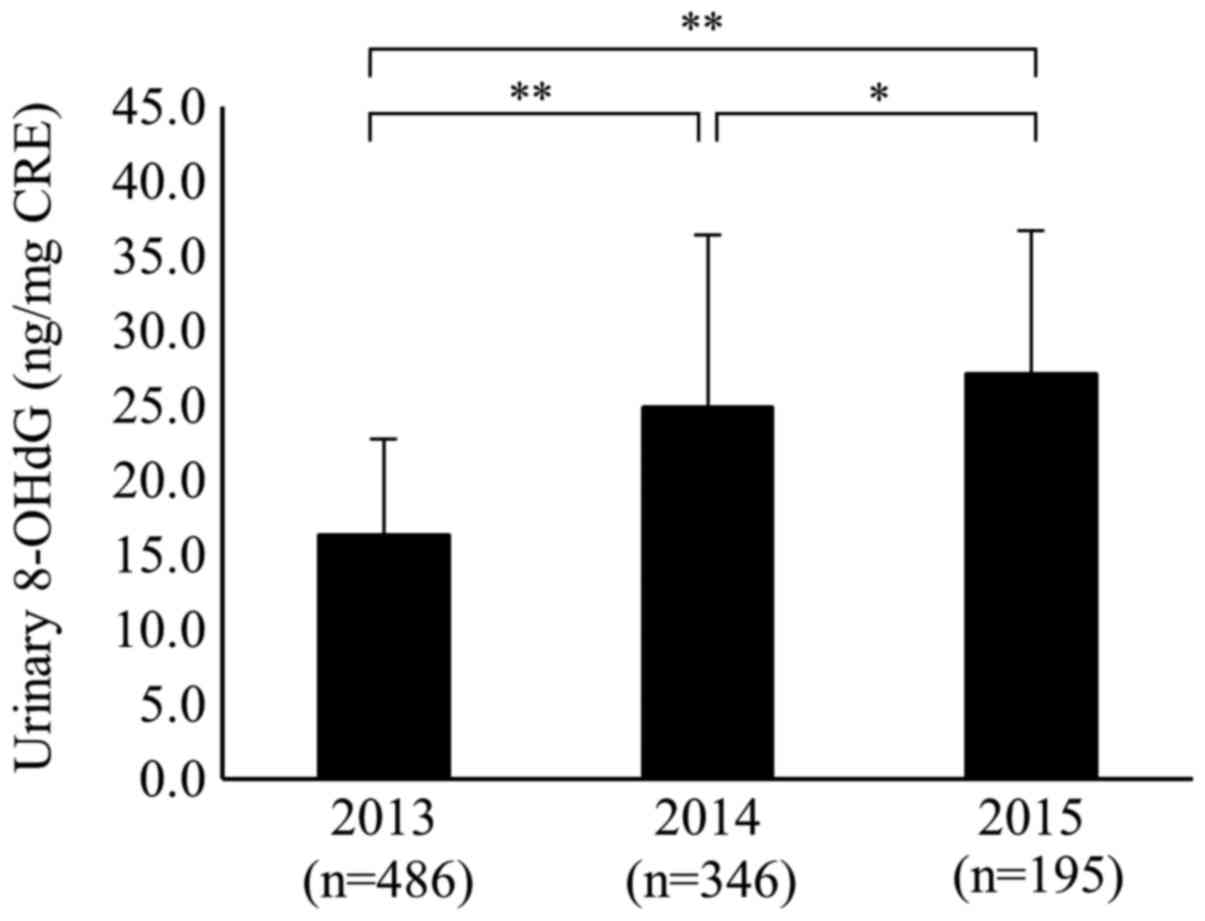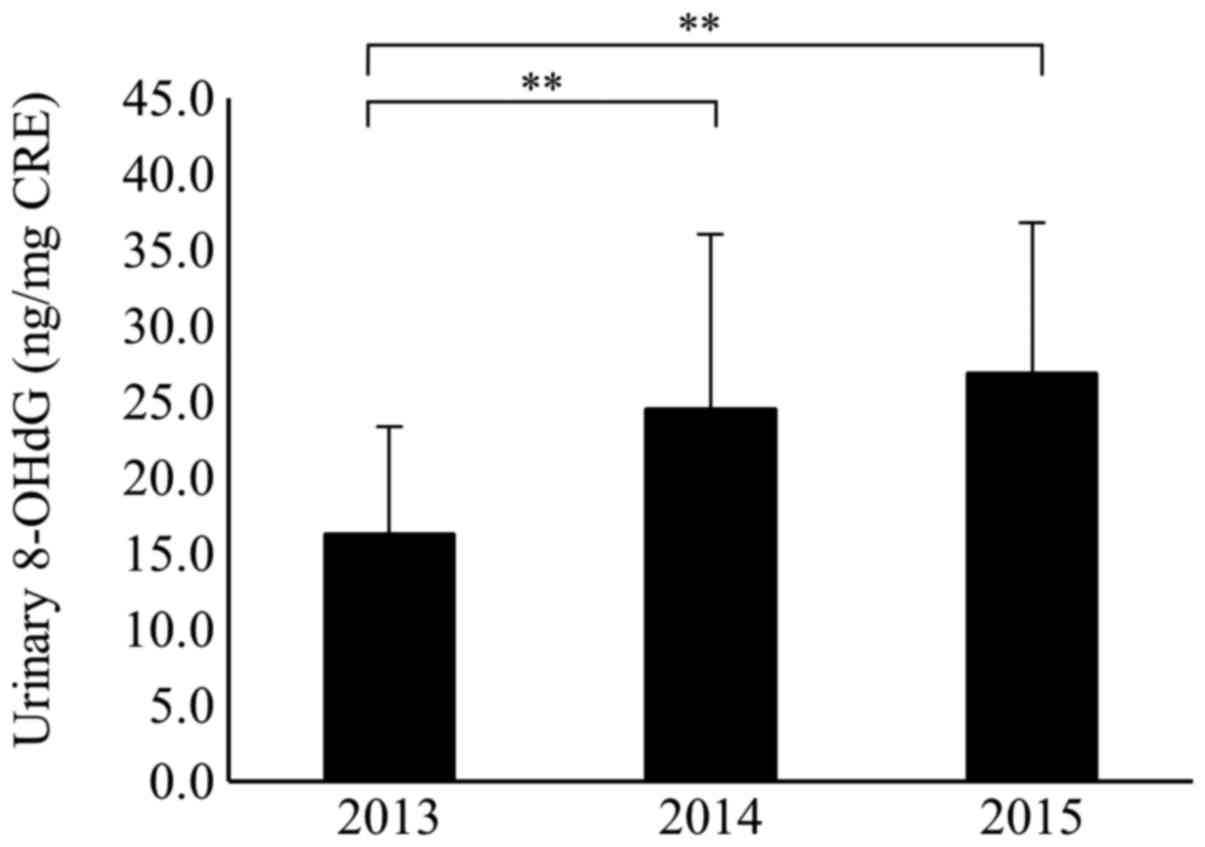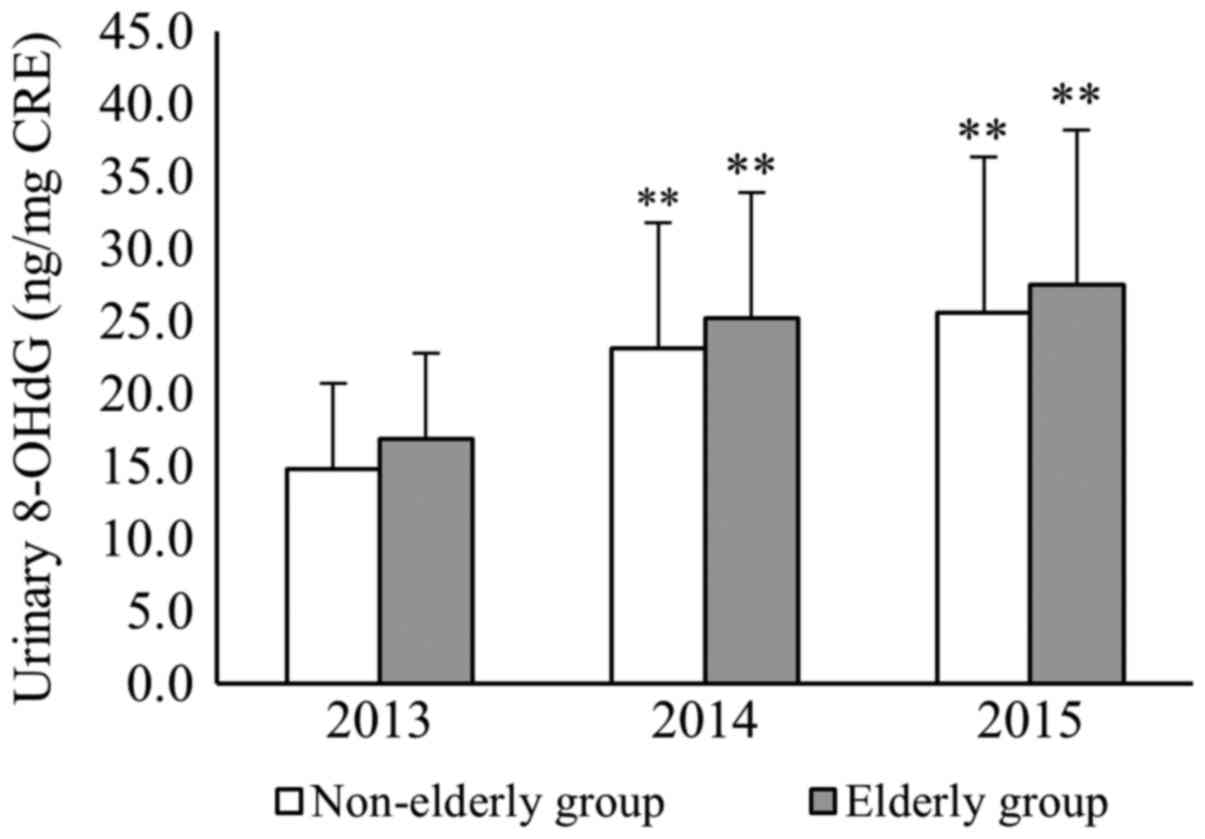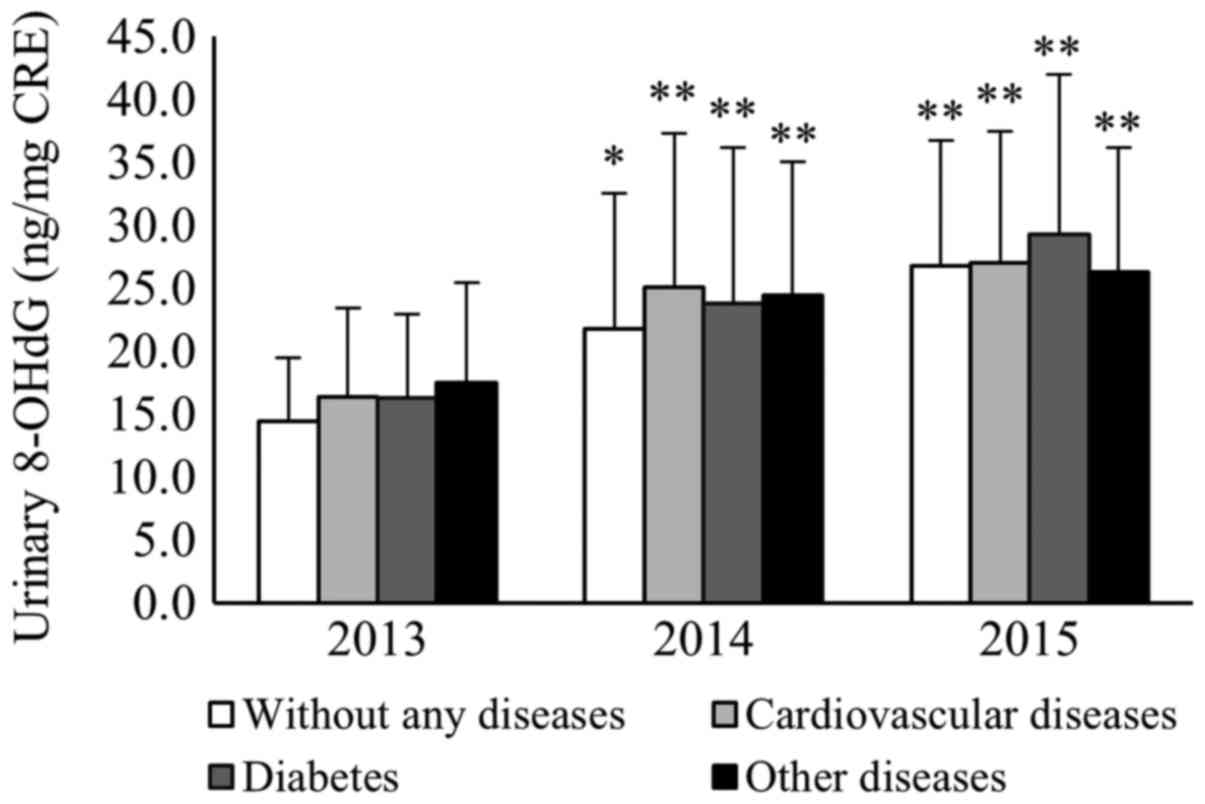|
1
|
Motoya R: Health Promotion for the Victims
and Evacuees of the Great East Japan Earthquake. Jap J Behavioral
Med. 19:68–74. 2013.(In Japanese).
|
|
2
|
Kitajima M, Otsu H, Tomisawa T, Sasatake
H, Itaki C, Yonaiyama C, Urushizaka M and Nishizawa Y: The
perception of health condition and radiation among elderly evacuees
four years after the Fukushima Nuclear Disaster. J Radiolo Nursing
Soc Jap. 5:47–55. 2017.(In Japanese).
|
|
3
|
Murakami H, Yoshimura E, Ishikawa-Takata
K, Nishi N, Tsuboyama-Kasaoka N, Yokoyama Y, Yaegashi Y, Sakata K,
Kobayashi S and Miyachi M: The longitudinal change in physical
activity among Great East Japan Earthquake victims living in
temporary housing. Nihon Koshu Eisei Zasshi. 61:86–92. 2014.(In
Japanese). PubMed/NCBI
|
|
4
|
Ohira T, Hosoya M, Yasumura S, Satoh H,
Suzuki H, Sakai A, Ohtsuru A, Kawasaki Y, Takahashi A, Ozasa K, et
al: Effect of evacuation on body weight after the great East Japan
earthquake. Am J Prev Med. 50:553–560. 2016. View Article : Google Scholar : PubMed/NCBI
|
|
5
|
Kasai H and Nishimura S: Hydroxylation of
the C-8 position of deoxyguanosine by reducing agents in the
presence of oxygen. Nucleic Acids Symp Ser. 165–167.
1983.PubMed/NCBI
|
|
6
|
Hayakawa H, Taketomi A, Sakumi K, Kuwano M
and Sekiguchi M: Generation and elimination of
8-oxo-7,8-dihydro-2′-deoxyguanosine 5′-triphosphate, a mutagenic
substrate for DNA synthesis, in human cells. Biochemistry.
34:89–95. 1995. View Article : Google Scholar : PubMed/NCBI
|
|
7
|
Loft S and Poulsen HE: Estimation of
oxidative DNA damage in man from urinary excretion of repair
products. Acta Biochim Pol. 45:133–144. 1998.PubMed/NCBI
|
|
8
|
Valavanidis A, Vlachogianni T and Fiotakis
C: 8-hydroxy-2′- deoxyguanosine (8-OHdG): A critical biomarker of
oxidative stress and carcinogenesis. J Environ Sci Health C Environ
Carcinog Ecotoxicol Rev. 27:120–139. 2009. View Article : Google Scholar : PubMed/NCBI
|
|
9
|
Kasai H, Iwamoto-Tanaka N, Miyamoto T,
Kawanami K, Kawanami S, Kido R and Ikeda M: Life style and urinary
8-hydroxydeoxyguanosine, a marker of oxidative DNA damage: Effects
of exercise, working conditions, meat intake, body mass index, and
smoking. Jpn J Cancer Res. 92:9–15. 2001. View Article : Google Scholar : PubMed/NCBI
|
|
10
|
Irie M, Miyata M and Kasai H: Depression
and possible cancer risk due to oxidative DNA damage. J Psychiatr
Res. 39:553–561. 2005. View Article : Google Scholar : PubMed/NCBI
|
|
11
|
Kimura S, Yamauchi H, Hibino Y, Iwamoto M,
Sera K and Ogino K: Evaluation of urinary 8-hydroxydeoxyguanine in
healthy Japanese people. Basic Clin Pharmacol Toxicol. 98:496–502.
2006. View Article : Google Scholar : PubMed/NCBI
|
|
12
|
Saito K, Aoki H, Fujiwara N, Goto M,
Tomiyama C and Iwasa Y: Association of urinary 8-OHdG with
lifestyle and body composition in elderly natural disaster victims
living in emergency temporary housing. Environ Health Prev Med.
18:72–77. 2013. View Article : Google Scholar : PubMed/NCBI
|
|
13
|
Harada N, Shigemura J, Tanichi M, Kawaida
K, Takahashi S and Yasukata F: Mental health and psychological
impacts from the 2011 Great East Japan Earthquake Disaster: A
systematic literature review. Disaster Mil Med. 1:172015.
View Article : Google Scholar : PubMed/NCBI
|
|
14
|
Maeda M and Oe M: Mental Health
Consequences and Social Issues After the Fukushima Disaster. Asia
Pac J Public Health. 29 Suppl 2:36S–46S. 2017. View Article : Google Scholar : PubMed/NCBI
|
|
15
|
Tomata Y, Sato N, Kogure M, Suto S, Imai
Y, Aoki H, Sugiyama K, Suzuki R, Sugawara Y, Watanabe T, et al:
Health effects of interventions to promote physical activity in
survivors of the 2011 Great East Japan Earthquake A longitudinal
study. Nihon Koshu Eisei Zasshi. 62:66–72. 2015.(In Japanese).
PubMed/NCBI
|
|
16
|
Itaki C, Fukushi Y, Kato T, Osanai T,
Ohtsu H, Sasatake H, Kitajia M, Tomisawa T, Hosokawa Y and
Nishizawa Y: The actual situation of motor functional decline of
elderly person who is continuing life as an evacuee by The
Fukushima Daiichi nuclear disaster and intervention to physical
activity preventive improvement. J Health Sci Res. 7:21–27.
2017.(In Japanese).
|


















